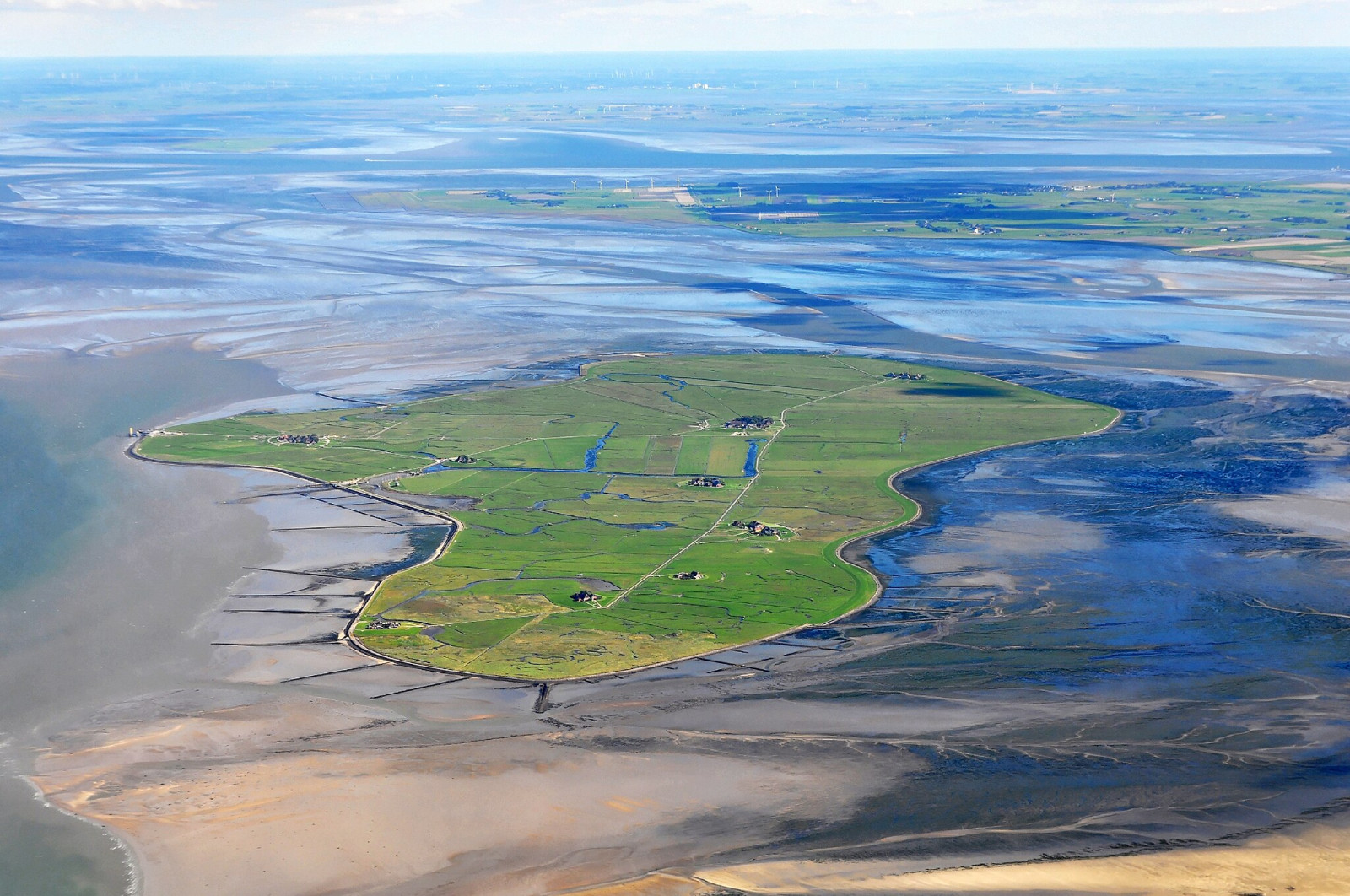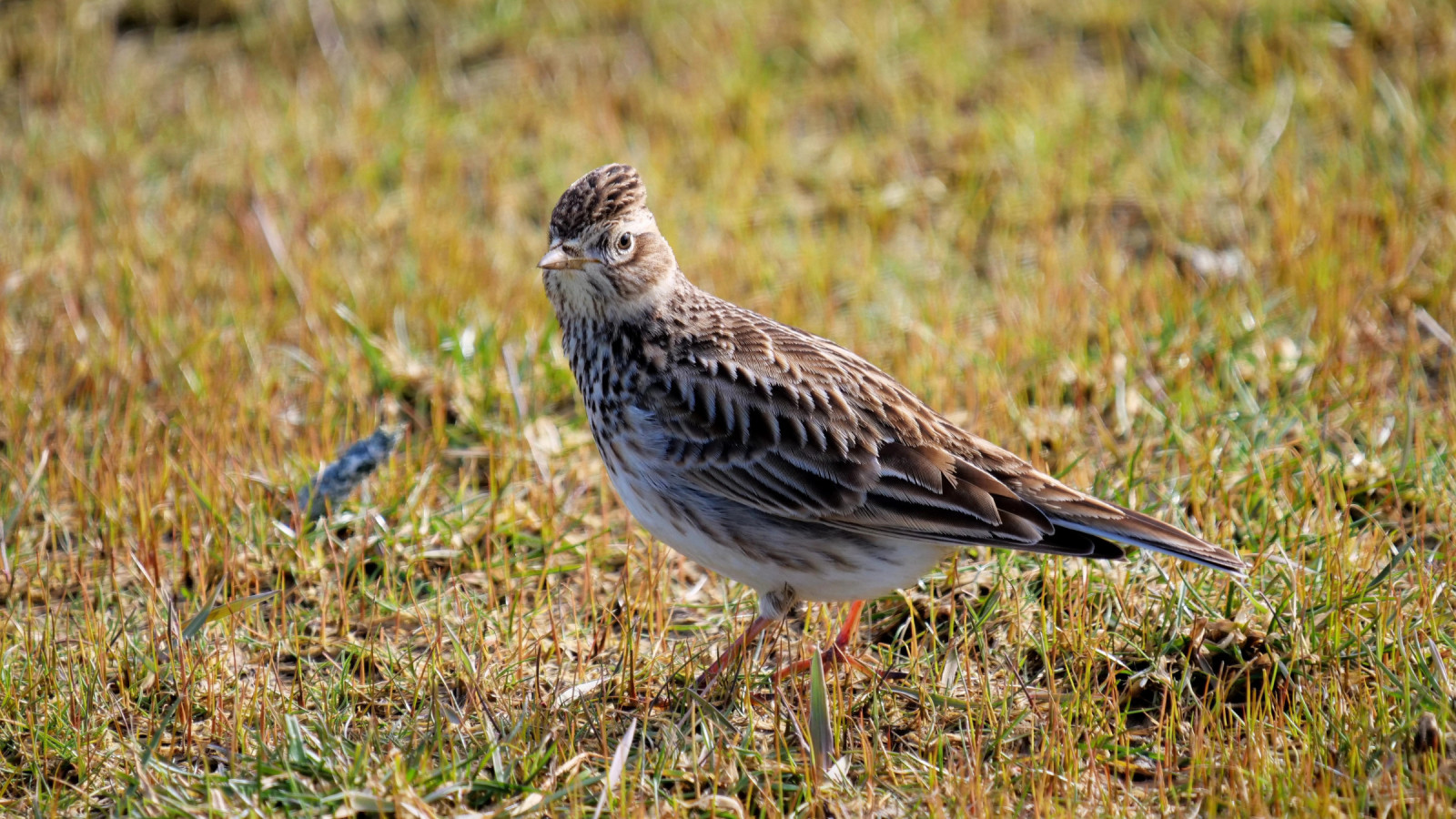Descrição
Hallig Hooge is characterized by large fallow areas, some of which are used for livestock farming. There are large areas of salt marsh on the east and west sides of the Hallig. While the North Sea is on the north side, large mudflats are exposed around the rest of the Hallig Hooge at low tide. Isolated hills with clusters of houses, small ponds and shrub structures allow very close observations of migrating songbirds, especially during migration periods.
On a small sandbank on the northeastern side of Hallig Hooge is a hightide roost of waders and other waterbirds. But during very high tides the entire island is used as a roost. Breeding birds include Ostraceiro, Perna-vermelha-comum and Andorinha-do-mar-anã on the small sandbar. Other birds you can encounter are depending on the season Ganso-de-faces-negras, Piadeira, Pato-branco, Eider-edredão, Merganso-de-poupa, Alfaiate, Tarambola-cinzenta, Tarambola-dourada, Maçarico-real, Fuselo, Borrelho-grande-de-coleira, Rola-do-mar, Pilrito-comum, Chasco-cinzento, Petinha-dos-prados, Andorinha-do-mar-árctica, Andorinha-do-mar-comum and Garajau-comum. During migration time you can also encounter birds such as Ganso-de-pescoço-ruivo, Escrevedeira-das-neves, Pilrito-escuro, Felosa-bilistada, Alvéola-branca ssp yarrellii, Torcicolo and all types of songbirds like trushes and flycatchers.
Detalhes
Acesso
Hallig Hooge can be reached by ferry from Schlüttsiel (see link below). Press P on the map for directions to Schlüttsiel. The crossing from Schlüttsiel to Hallig Hooge takes approximately 1 hour and 15 minutes. Every point on the island of Hallig Hooge itself is easily accessible on foot or by bike. You can get around on foot on the Warften (small hills, including clusters of houses and bush structures), but there are also some private properties and private paths.
Terreno e Habitat
Terras húmidas , Campina , Árvores e arbustos dispersos , Planice , Mar , Dunas , Pequeno lago , Lamaçais , Agricultura , Camas de junco , Cidade/VilaCondições
Plano , Montanhoso , Paisagem aberta , Possível na maré cheiaCaminho circular
Simé útil um telescópio?
Pode ser útilBoa temporada de observação de aves
Durante todo o anoMelhor hora para visitar
Migração da primavera , Migração de outonoRota
Estrada pavimentada , Caminho largo , Estrada não pavimentada , Caminho estreitoCaminho dificil
FácilAcessível por
Pé , Bicicleta , Cadeira de rodasAbrigo/plataforma deobservação de aves
NãoInformação extra
Ganso-de-pescoço-ruivo Zarro-bastardo Pato-preto Pato-olho-d'ouro Ganso-grande-de-testa-branca Zarro-bastardo Mergulhão-pequeno Cuco-canoro Noitibó da Europa Andorinhão-preto Galeirão-comum Grou-comum Abibe-comum Borrelho-pequeno-de-coleira Borrelho-ruivo Pilrito-de-bico-comprido Galinhola Narceja-comum Falaropo-de-bico-fino Maçarico-das-rochas Pássaro-bique-bique Perna-verde-comum Moleiro-parasítico Gaivota-tridáctila Gaivina-de-bico-vermelho Mobêlha-pequena Ganso-patola Garça-branca-pequena Colhereiro Águia-pesqueira Tartaranhão-azulado Felosa-palustre rouxinol-dos-caniços Felosa-assobiadeira Felosa-bilistada Felosa-listada de Hume Estrelinha de Pallas Felosa-europeia ssp tristis Trepadeira-do-bosque Trepadeira-comum Melro-de-peito-branco Tordeia Chasco-cinzento Alvéola-cinzenta Petinha-marítima Alvéola-branca ssp yarrellii Grey-headed Wagtail (thunbergi) Alvéola-amarela-comum ssp flavissima Tentilhão-montês Pintarroxo-de-bico-amarelo Pintarroxo-de-queixo-preto Escrevedeira-dos-caniços Açor Búteo-calçado Águia-d'asa-redonda Guarda-rios-comum Torcicolo Esmerilhão falcão-peregrino Picanço-de-dorso-ruivo Pega-rabuda Gralha-de-nuca-cinzenta Gralha-calva Gralha-cinzenta Cotovia-cornuda Cotovia-pequena Felosa-icterina Felosa-dos-juncos




